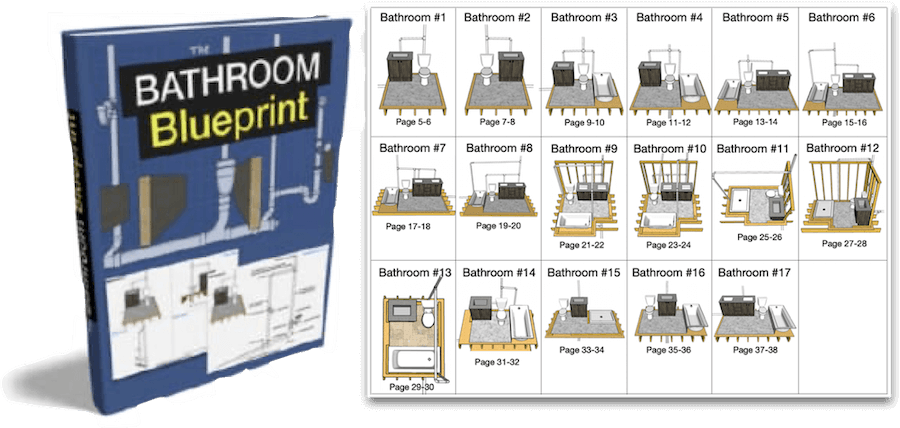S-Traps are illegal and outlawed by both major U.S. Plumbing Codes.
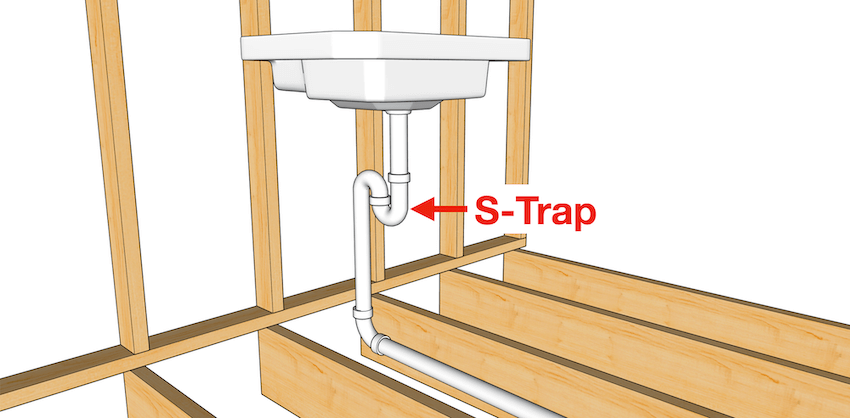
Today’s article will get you up to speed on everything you need to know about S-Traps:
Here’s what’s inside this jam-packed article:
Note: You can jump to specific sections of this article, by using the Table of Contents below.
Article Table of Contents:
What is an S-Trap?
S-Traps vs. P-Traps (What’s the BIG difference?)
Why are S-Traps Illegal (and doomed for failure)?
The History of the S-Trap
Crown Vents (and why they’re outlawed by Code)
These 2 design tweaks perfected the plumbing trap
How to accidentally create an S-Trap with a P-Trap (common rookie mistake).
When does the code allow S-Traps?
Should I replace my S-Trap?
S-Trap to P-Trap Conversions (with How-To Diagram)
What is an S-Trap?
An S-Trap is a type of trap for plumbing.
The purpose of an s-trap (or any plumbing trap) is to “trap” water inside the “u” section of the pipe.
That trapped water creates what the plumbing code calls the “trap seal.”
The trap seal is the single most important component of your DWV plumbing system because it blocks sewer gas…
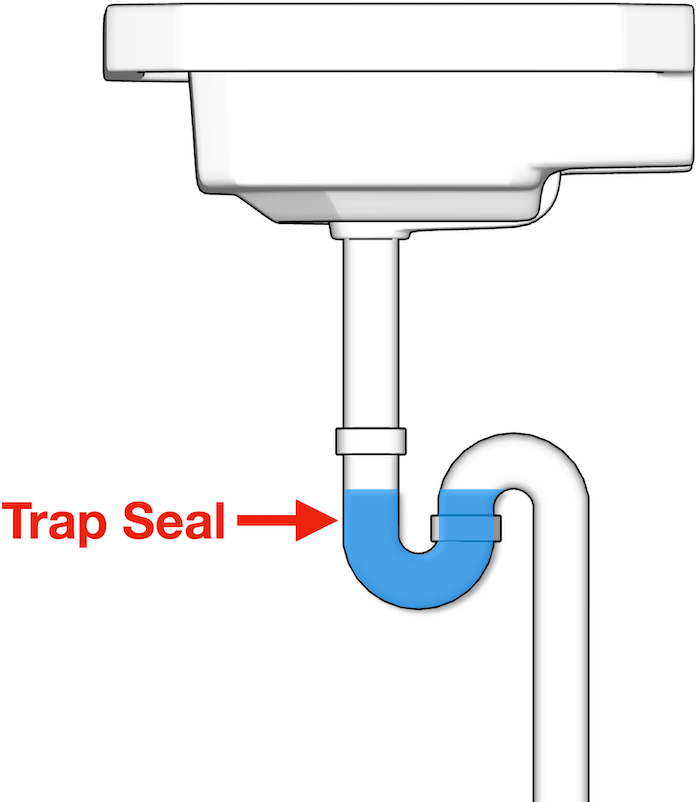
The unique design of both S-Traps and P-Traps is what creates this crucial seal.
If that crucial seal gets compromised, sewer gas has an open pathway right into your home.
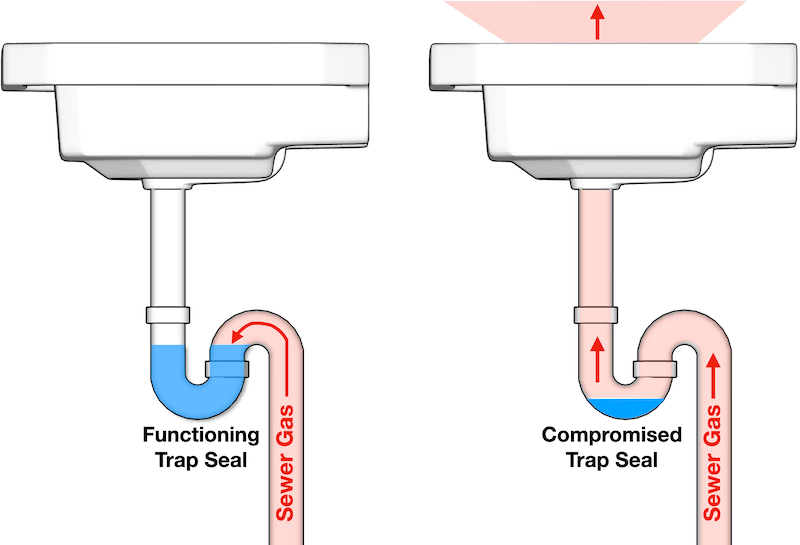
But with that seal intact, people inside the home are protected from vapors, odors and even insects that are present inside a drainage system.
S-Traps vs P-Traps (What’s the BIG difference?)
There are several BIG differences between an S-Trap and a P-Trap.
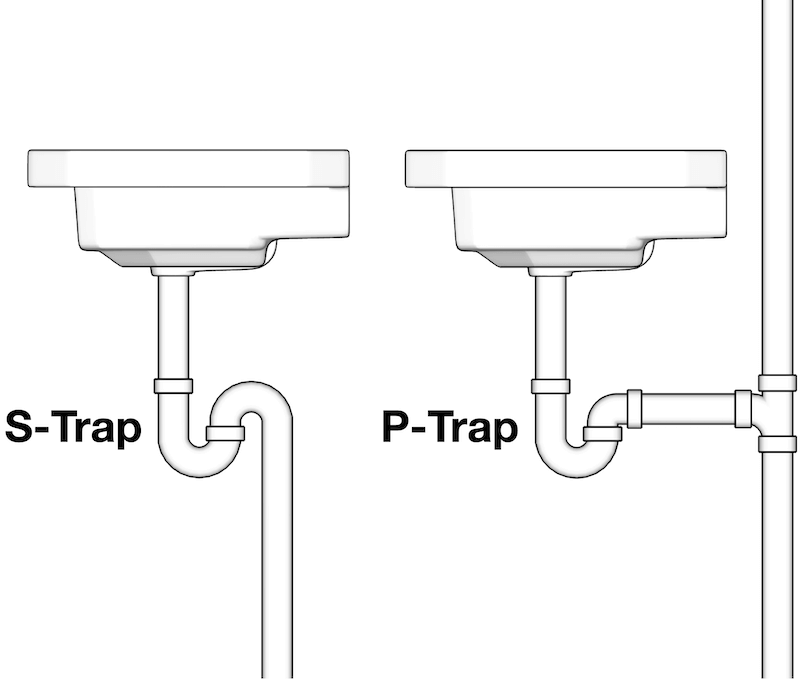
At first glance, notice the S-Trap makes the shape of an “S” and the P-Trap makes the shape of a “P.”
But these differences run deeper than the shape these plumbing traps create.
The biggest difference between S-Traps and P-Traps is both major U.S. plumbing codes prohibit S-Traps from being installed. This is according to IPC 1002.3 and UPC 1004.1.
Prohibited Plumbing Traps:

Here’s the full list of plumbing traps prohibited by U.S. plumbing codes:
- S-Traps
- Drum Traps
- Bell Traps
- Traps with Moving Parts
- Traps with interior partitions
- Crown Vented Traps
The only type of plumbing trap that’s code approved is the P-Trap.
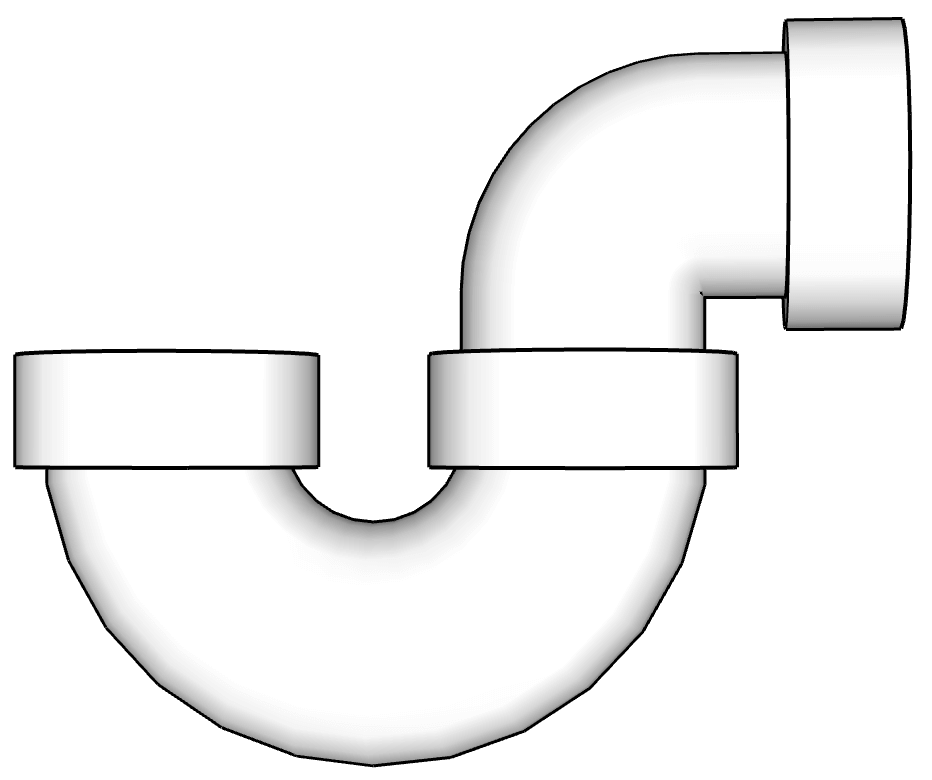
Why are S-Traps illegal?
S-Traps are illegal because they’re prone to siphonage.
Siphonage (or negative pressure) occurs when the atmospheric pressure on the discharge side of the trap is lower than the inlet side.
A siphon condition renders the plumbing trap empty (or partially empty).
Again, an empty trap is a big deal…
Without that precious seal, sewer gas has an open pathway right into your home.
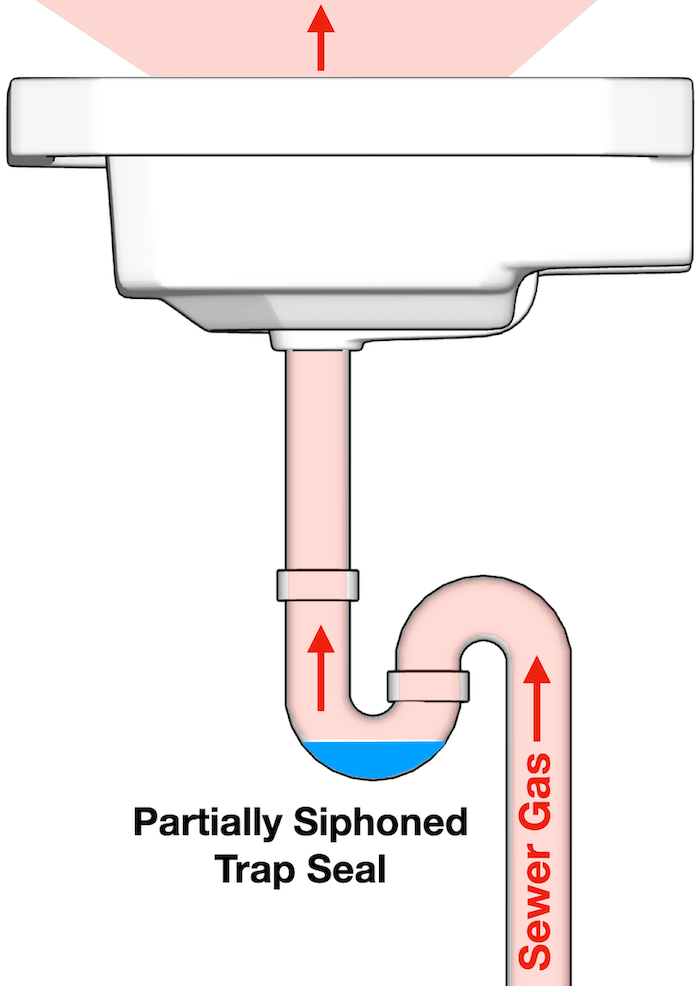
The reason S-Traps are prone to siphon is they lack a plumbing vent.
In fact, any plumbing trap without a plumbing vent is doomed…
This is true regardless if it’s an S-Trap or even a P-Trap.
Without a vent, trap seals are subjected to pressure fluctuations that occur inside a drainage system. Those changes in pressure can be detrimental to the trap seal.
However, a plumbing vent is the missing ingredient a trap needs to function correctly.
A properly installed plumbing vent keeps pressure fluctuations to a bare minimum.
The result is a plumbing trap that reliably maintains its trap seal.
This is why code requires every plumbing trap to be vented. See IPC 901.2.1 or UPC 901.2.
If you’d like to see examples of properly vented plumbing traps…
For major household fixtures like bathtubs, showers, toilets, and sinks…
All sized to code standards…
The History of The S-Trap
Back in 1775, when the S-Trap was invented, it was cutting-edge technology.
Alexander Cummings, a watchmaker from Scotland, helped bring plumbing indoors by putting an “s-bend” in the piping below a toilet.
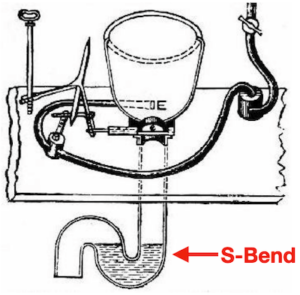
The clever design of the s-bend naturally tapped water, thereby creating the crucial trap seal.
Even though Alexander’s S-Trap was a step in the right direction, it only blocked sewer gas intermittently because the seal was highly prone to siphonage.
To deal with these siphoning problems, plumbers started installing crown vents on S-Traps.
Crown Vents (and why they’re outlawed by the Plumbing Code)
A crown vent is a vent connecting to the upper “U” of the trap.
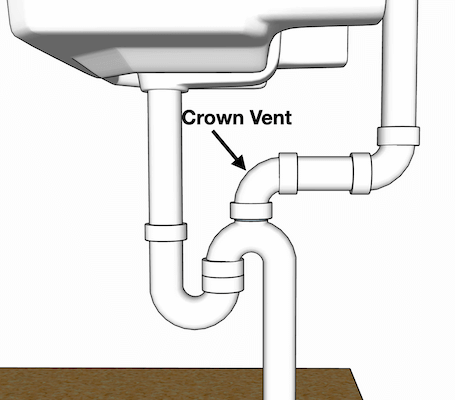
Crown vents temporarily reduced the S-Trap’s siphon issues because it introduced air into the drain.
The air naturally broke the siphon.
And since the siphon broke, trap seals started staying inside traps.
Well kind of…
Crown vents also have problems…
They too are outlawed by code (IPC 1002.3 and UPC 1004.1).
Why are crown vents illegal?
The plumbing code prohibits crown vents because they’re prone to self-siphonage.
Here’s how it happens…
The flow immediately downstream of the trap is turbulent.
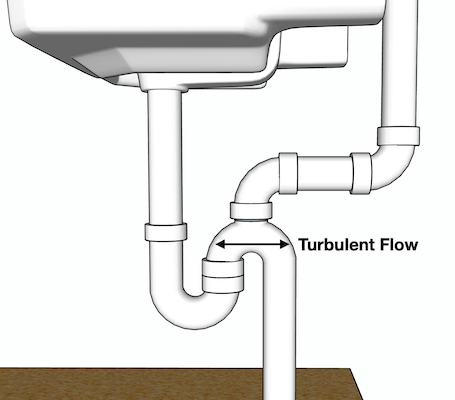
That turbulent flow pushes debris up into the vent.
Over time that debris accumulates and eventually blocks the vent…
A blocked vent is the same as no vent…
So we’re right back where we started…
A plumbing trap that cannot keep its seal inside the trap.
It’s also common for modern day installers to accidentally create a crown vent using a regular P-Trap.
This mistake occurs when the trap to vent distance is too short.
So what was the ultimate solution to the design of the P-Trap?
These 2 design tweaks perfected the plumbing trap:
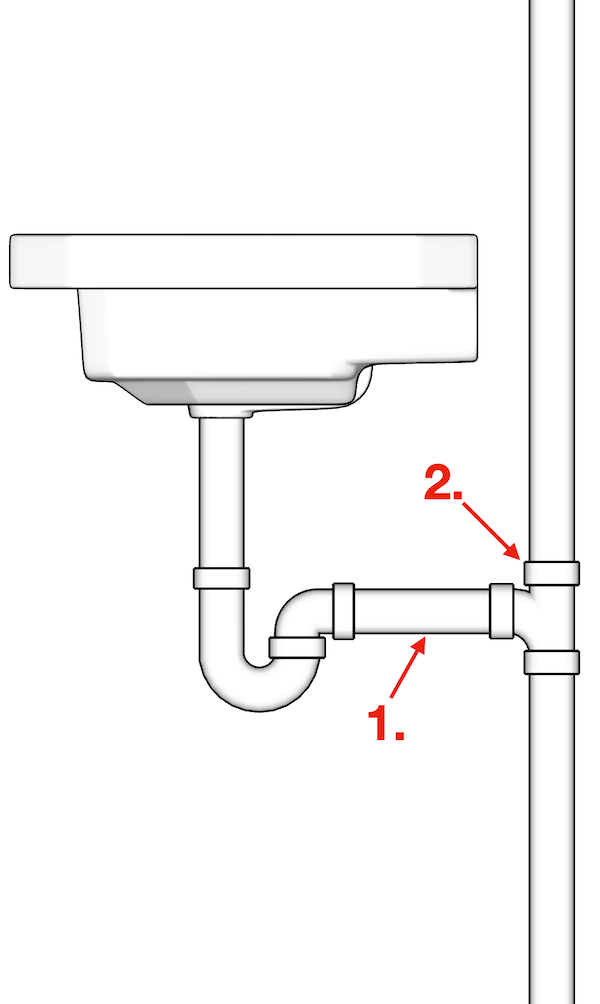
- Make the trap arm horizontal by replacing the upper U section with a 90.
- Move the vent downstream a minimum of 2 pipe diameters (to avoid the turbulent flow zone).
Believe it or not, it took mankind 150 years to finally perfect the plumbing trap!
The evolution of the Plumbing Trap:
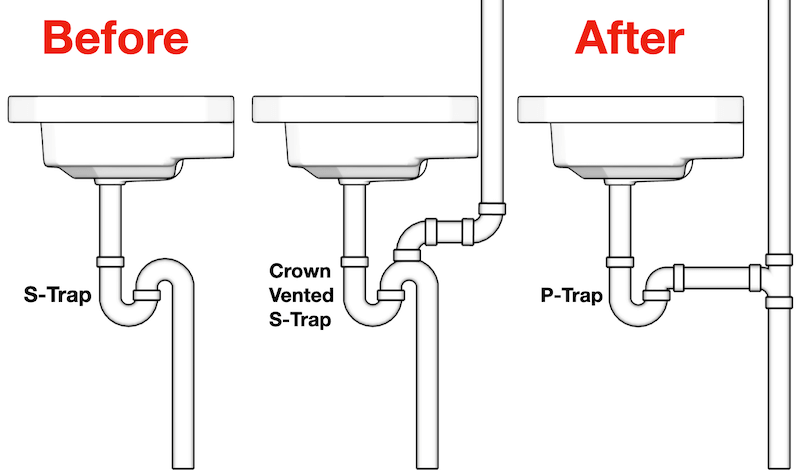
But it’s a good thing we figured it out because…
A properly installed p-trap does a great job of keeping sewer gas out of your home.
Want more examples of properly installed P-traps?
For household fixtures like bathtubs, showers, lavs and toilets…
Along with entire vent system examples, all pre-designed to code standards.
Then take a look at our collection of plumbing plans.
These plans give you the inside scoop on how all the pipes come together.
We’ve got 17 plans to choose from…
Just pick your layout and follow the plan.
Moving along…
It’s also wise to mention there are other types of S-Traps…
How to accidentally create an S-Trap with a P-Trap (common rookie mistake).
Here’s a big mistake lots of people innocently make.
And it sounds strange at first…
But you can create an S-Trap using a P-Trap.
“Say what?”
Yes, it’s a common “rookie” mistake in the plumbing field…
Let me explain…
The trap weir is the tiny point on the trap where water starts to flow back down the drain.
The vent opening is the point where air is introduced into the trap arm.
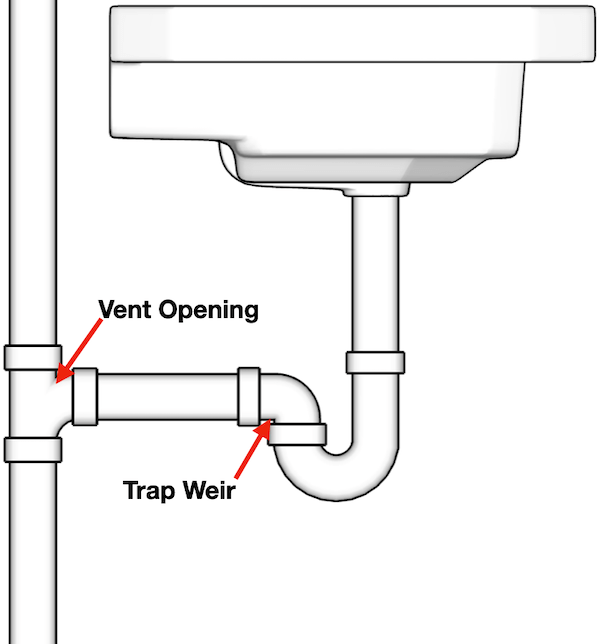
According to 909.2 of the IPC, the trap weir can never rise above the vent opening.
Anytime the trap weir rises above the vent opening, a self-siphoning environment is created.
This type of arrangement is also called an “S-Trap.”
It’s a slang expression…
But when this arrangement occurs, a P-Trap will have the same siphoning issues as an S-Trap.
That’s why it’s commonly called an S-Trap.
Here are a few examples of the “Accidental S-Trap:”
Plumbing Trap Violations
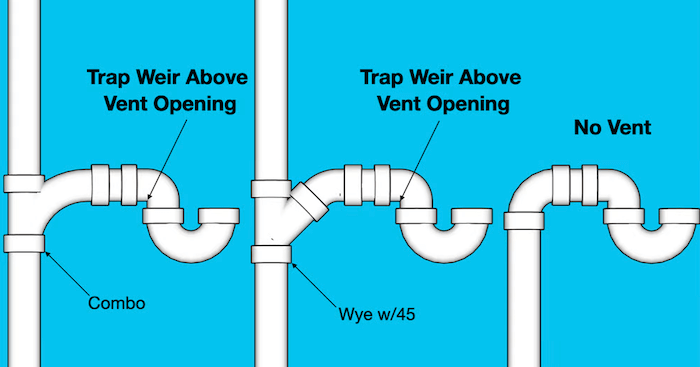
By the way, there are other ways to create these “Accidental S-Traps” that are not mentioned in this article…
Each mistake will fail an inspection.
But preventing these mistakes is easy…
You just need to know what to look for.
That’s why I put together a series of easy to follow, step-by-step videos, that makes understanding plumbing easier…
This special training has helped a lot of DIYers to plumb their entire house.
When does the code allow S-Traps?
In the section above, you learned the trap weir has to stay below the vent opening.
Anytime that rule gets violated, it’s also called an S-Trap.
However, did you know most toilets are S-Traps?
The trap weir of a floor outlet toilet always rises above the vent opening (it’s unavoidable).
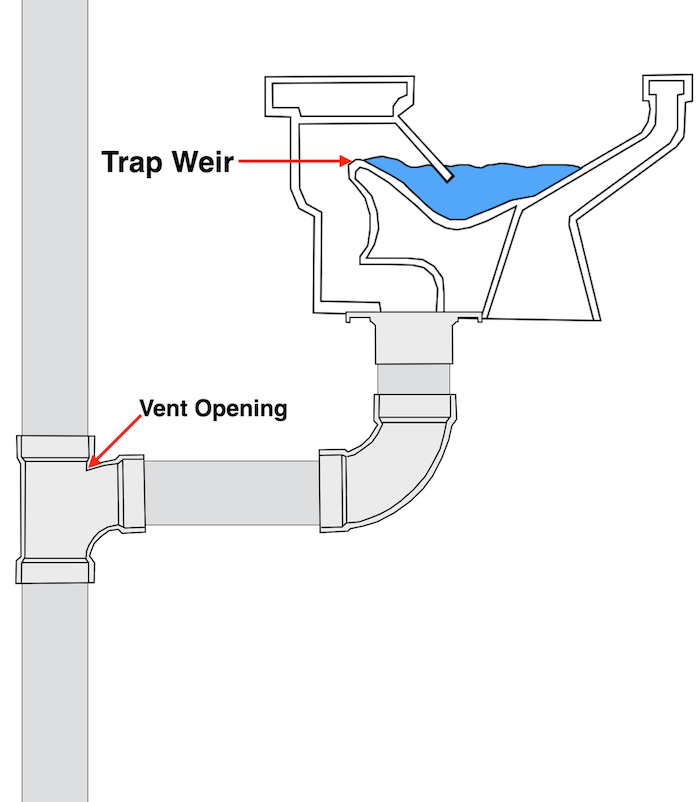
But don’t fret, 909.2 of the IPC makes toilets exempt from this requirement.
And here’s why: toilets are self-siphoning fixtures.
When you flush your toilet, its internal trap seal gets siphoned right down the drain…
But then…
The internal trap seal automatically refills itself, thereby protecting the occupants of the house from sewer gas.
Important installation note: external traps are NEVER installed for toilets. Toilets have internal plumbing traps built into the bowel and double trapping a toilet (or any plumbing fixture) is strictly prohibited.
Should I replace my S-Trap?
Updating your outdated S-Trap with a P-Trap is a great idea…
Remember, S-Traps are 1880’s technology…
They frequently siphon their trap seals, thereby releasing sewer gas into your home.
That’s why all U.S. plumbing codes outlaw S-Traps (IPC 1002.3, UPC 1004.1).
P-Traps on the other hand, are time-tested and reliable.
A properly installed P-Trap keeps you, your family and your dog safe from sewer gas.
Also, if you sell your house, you won’t have to deal with a negative home inspection report that could potentially scare away your buyer.
S-Trap to P-Trap Conversions (with How-To Diagram)…
If you decide to update your S-Trap to a P-Trap read this section carefully…
The biggest mistake people make when converting an outdated S-Trap to a P-Trap is failing to properly vent the new P-Trap.
Lots of folks innocently remove the S-Trap, glue on a 90 and attach the new P-Trap thinking the problem is fixed.
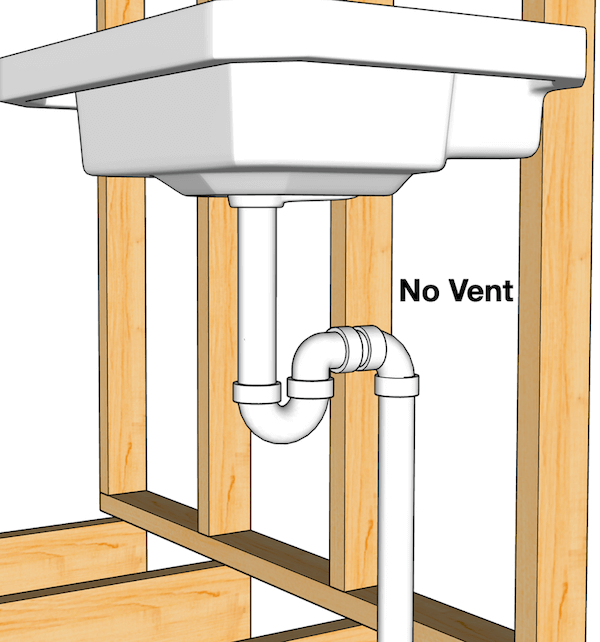
Remember, any plumbing trap (whether it’s an S-Trap or a P-Trap) without a plumbing vent will not function properly (re-read this article to understand why).
The moral of the story…you need to vent your new P-Trap.
So here you go…
3 options to convert your outdated S-Trap with the code-approved P-Trap:
Option #1: Install a new vent.
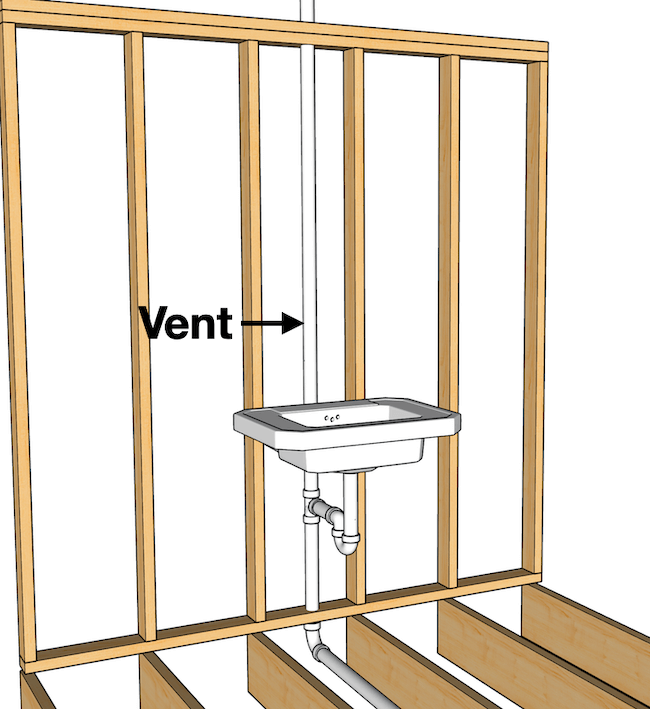
This is the best solution (but not the easiest).
If you’re remodeling and have the luxury of open wall chases (or don’t mind opening chases) this is a great option.
But remember…
You cannot run this vent up into your attic and just leave it there…
Instead, this vent needs to either:
a.) Tie into your home’s existing venting system (usually through a sanitary tee).
b.) Terminate outdoors to open air by itself (usually through the roof).
Option #2: Install an AAV.
Without a doubt, this is the easiest solution.
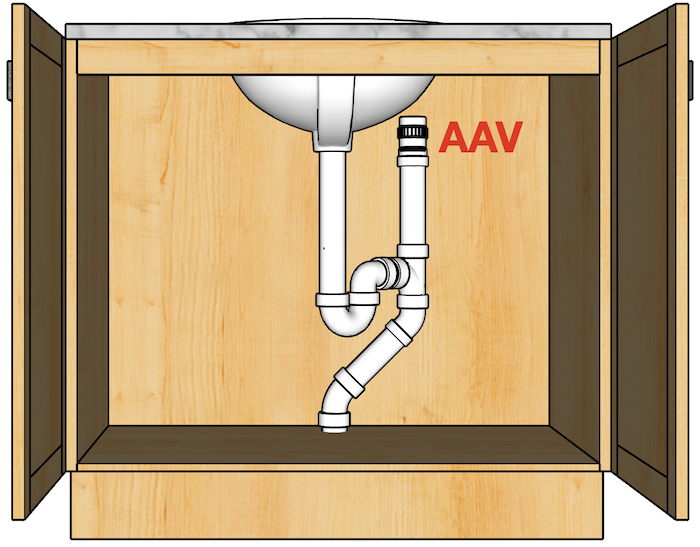
It’s one of the reasons why I’m a huge fan of AAVs…
AAVs save astronomical amounts of time and pain…
Why? Instead of taking your vent out the roof, take it to an AAV (in many cases).
This means fewer holes to drill, less time on the job and more money in your pocket.
Another plus…one properly installed AAV can last over 20 years!
But before installing your next AAV, you have to be familiar with the rules and code behind them.
Unfortunately, not all codes permit AAVs (so check your local code before proceeding)…
Also, there are special rules you have to follow to properly install an AAV…
For example, there are special height requirements and these heights depend on the location of the AAV.
Also, there are different types of AAVs…some are more suitable for venting an individual fixture and some are more suitable for venting multiple fixtures.
I put everything I practically know into a training video you might want to check out.
The training will get you up to speed on everything you need to know about the time-saving AAV.
See Bonus Video #4 of “Drains and Vents (for DIYers)” on this page >>
Option #3: Install an Island Fixture Vent (loop vent).
This might be another option to consider.
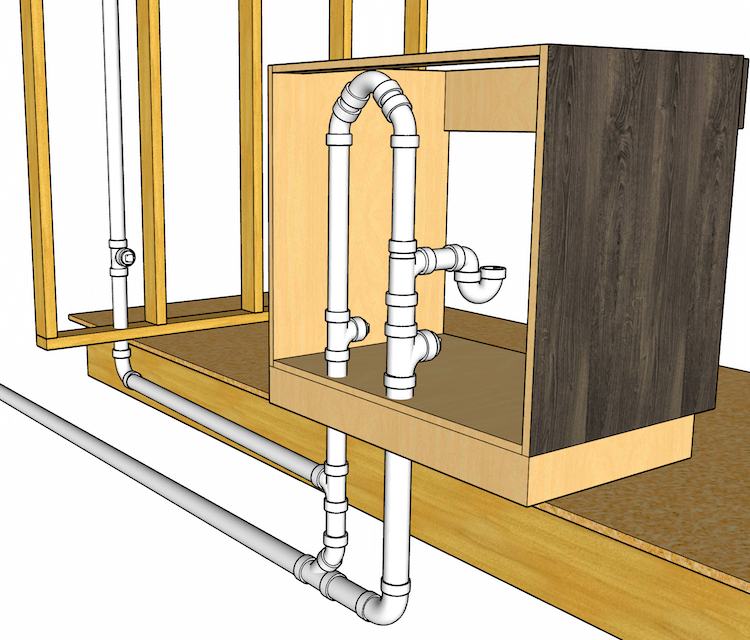
Both the IPC and UPC allow island vents…
But here’s what many folks miss with island fixture vents…
Island Fixture Vents are for specific fixtures located “in an island.”
In the IPC, those fixtures include sinks, lavatories, and residential kitchen sinks. See IPC 916.1 and your local code official for more information.
The UPC limits island venting to traps for island sinks and “similar equipment.” See UPC 909 and your local code official for more information.
